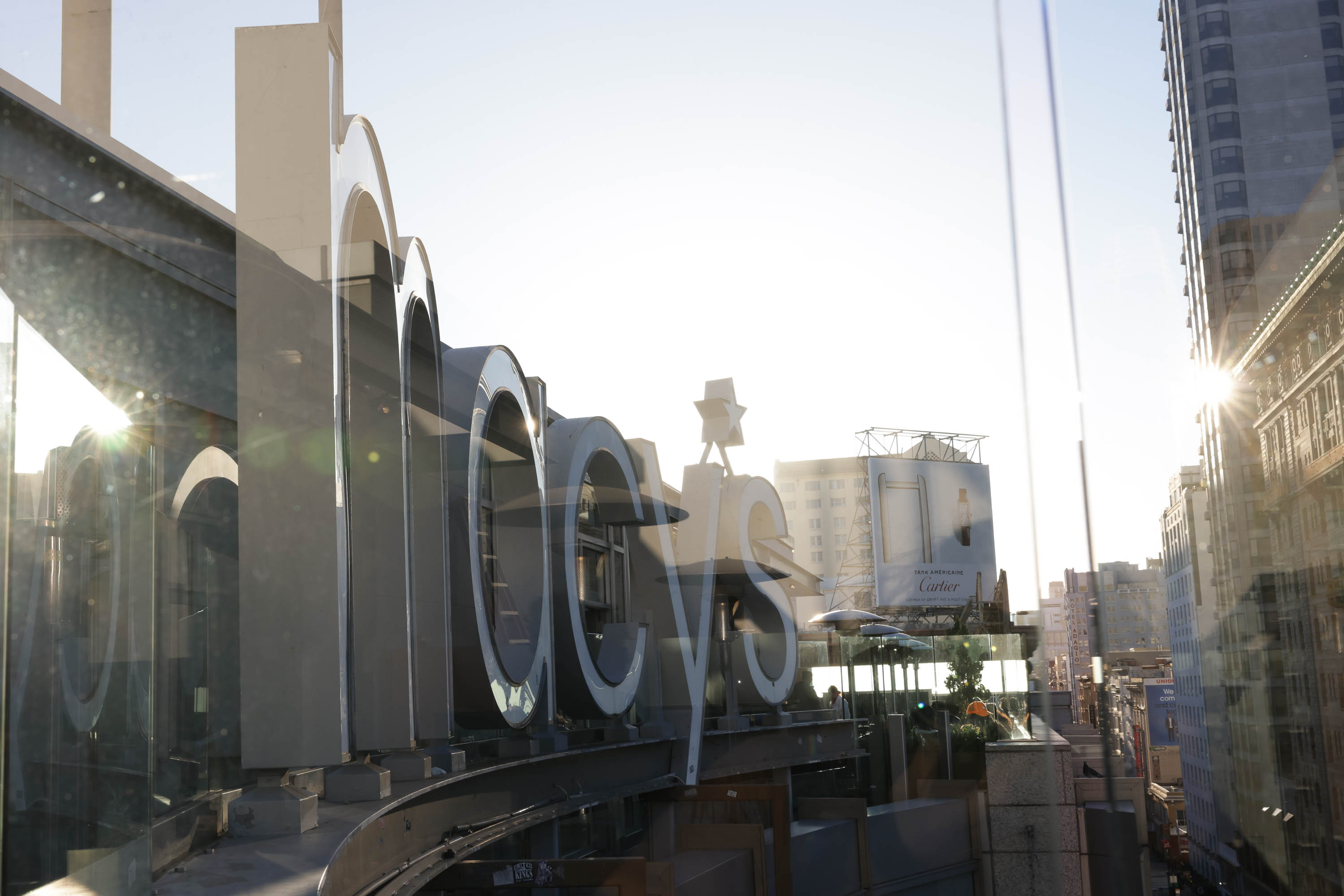Every thriving shopping district needs an anchor—a center of gravity for everything else to orbit around. Usually a grocery or department store, the anchor occupies the most space, attracts the most people and serves as a landmark for the neighborhood.
For the better part of a century in Union Square, that was Macy’s—until it confirmed Feb. 27 it intends to pull out of its flagship store in San Francisco.
If the retailer were to vacate the roughly 700,000 square feet it occupies today, a shocking 34.5% of the shopping district would be rendered empty and available, per real estate firm Avison Young. That figure would even outstrip the 30.2% total office vacancy rate that has functioned as a bright red flag for the health of the city’s downtown.
The sudden decline of San Francisco’s top shopping destination, paired with an unprecedented retreat from office use, is a novel trial for a city that has faced its fair share of challenges in recent years.
For Union Square and its environs, the changes have come rapidly. In 2016, less than 3% of retail space in the area was available for lease. That number spiked to 9.4% at the onset of the pandemic, which cut off daily foot traffic downtown. Fast forward to today, and that number has only gotten worse, now standing at approximately 22%.
Just this week alone saw the exits of two national retailers. On Wednesday, the North Face confirmed it would be closing its doors at 180 Post St. at the end of the month. And a day later, fast-fashion giant Zara announced it was opting not to renew its lease, leaving its 26,000-foot space vacant at the end of the year.
Union Square’s recent fall from grace resembles what played out at the former Westfield Centre mall, now known as Emporium Centre San Francisco, a few blocks away. The departure of anchor tenant Nordstrom opened the door to a string of closures at the shopping center that are still continuing and have left the property more than half vacant.
One factor leading to the ongoing exodus is the concept of “co-tenancy,” according to Alex Sagues, a retail broker for real estate firm CBRE.
Retail tenants tend to want to be clustered close to one another for both competition and foot traffic purposes, Sagues said. Once a certain number of stores begin leaving, however, that momentum can snowball as brands try to avoid being the last one left holding the bag.
“Retailers are not drawn to what ‘could be,’” said James Chung, the founder of retail brokerage Econic Company, at a Building Owners and Managers Association luncheon in San Jose. “What they need is a critical mass.”
Large brands are also less price-sensitive than small mom-and-pop retailers when it comes to space. “Brands are not going to go somewhere just because of low rent,” Chung said. “Louis Vuitton, for example, is going to be willing to pay a premium to be next to Gucci.”
Circling the square
Unfortunately for the businesses that remain in Union Square, there are yet other signals that more changes are imminent. Kazuko Morgan, a retail broker with Cushman and Wakefield, confirmed that Burberry is aiming to sell its building at 225 Post St. Real estate sources say the luxury retailer is eyeing a move to another nearby space.
Lenders have also sued to take control of One Union Square at the corner of Geary and Stockton streets, which houses the luxury jeweler Bulgari, after owners defaulted on a loan for the property.
There are a few positive pieces of news for the neighborhood, although they pale a bit in comparison to the Macy’s announcement. A new Michael Mina restaurant is reportedly headed to the Westin St. Francis as part of its lobby renovation and the high-end women’s clothing retailer St. John Knits is coming into a space at 245 Post St., according to building permit records.
At her State of the City address Wednesday, Mayor London Breed called for an initiative to shore up the losses by bringing 30,000 new residents and students to the city’s downtown by 2030. In the wake of high-profile retail departures, she has repeatedly said downtown needs to be reimagined.
Nightlife and entertainment venues have proven to be a rare bright spot in the story of downtown’s transformation, as The Standard reported this week. Recent openings like Chotto Matte and the Starlite Lounge on O’Farrell and Powell streets, have injected much-needed vitality into a flagging neighborhood—at least at night.
But during the day, signs of decline are more pronounced. Legislation passed last year was meant to allow more land-use flexibility in Union Square. The ordinance allows entertainment businesses and flexible retail workspaces to move in and allows residential and office uses above the ground level. However, few projects have been pitched thus far.
Sagues said it wouldn’t be realistic to expect another retailer to take up the entirety of Macy’s space.
“No one really needs all of that big-box space,” he said, adding that a blend of office, entertainment and retail on different floors made more sense in today’s environment
What comes next is an open question that policymakers, business leaders and the city writ large are still struggling to answer.
